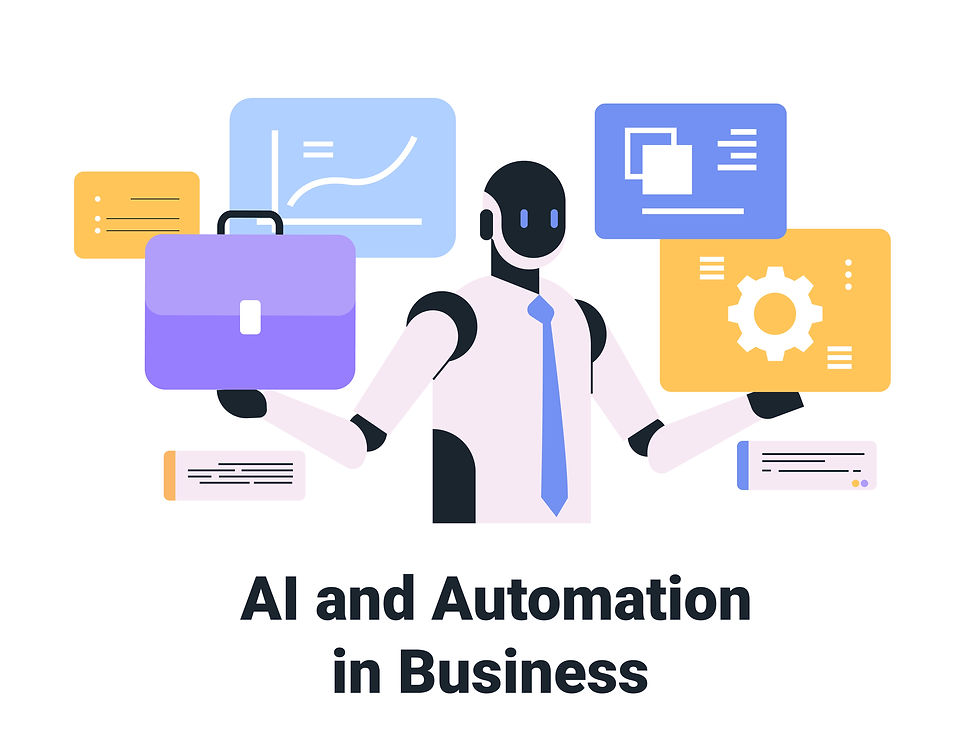🚀 From Vibe Coding to the Last Mile: How CC Concept Helps Businesses Turn AI Ideas into Real Products
- Patrick Wong

- Sep 17
- 3 min read
Updated: Sep 18
In the age of AI, the way we write code is changing dramatically. With the rise of generative AI tools like ChatGPT, Claude, Grok-3, has become a hot topic. Simply put, Vibe Coding means relying on AI to generate code—turning ideas or small tools into reality almost instantly.

🔎 What is Vibe Coding?
Vibe Coding refers to a coding style where developers skip detailed planning and let AI generate code to “just get something running.”
It works well in scenarios such as:
Small tools & side projectsExample: a Telegram bot, a Line auto-responder, or an Excel-to-JSON converter—all generated by AI in minutes.
Quick demos / prototypingWhen a client urgently wants to see an interface but design isn’t finalized, AI can quickly put together a working mock-up.
Learning new languages or frameworksInstead of reading long documentation, developers can ask AI to generate a snippet and learn by reverse engineering.
Handling tedious scriptsFile renaming, sending automated report emails, or batch-processing scripts.
👉 The common theme: it only needs to work short-term, not last long-term.
⚠️ The Limitations & Risks of Vibe Coding
While Vibe Coding is exciting, experts (including Infoworld) warn that AI-generated code cannot be blindly trusted in certain areas:
Finance, privacy, and compliance systemsMistakes in transactions or data leaks can lead to serious legal and business consequences.
Core architecture of large projectsEvent consistency between microservices, distributed locks, or compensation logic in transactions require human architects—AI can’t fully understand these complexities.
High-performance or precision-critical codeRecommendation engines, numerical analysis, video processing, or real-time gaming logic require optimization and rigor. AI code often “works, but not fast or accurate enough.”
Products requiring long-term maintenanceAI-generated code is often messy, with poor naming, missing comments, and inconsistent styles—making handover to a dev team a nightmare.
👉 Conclusion: Vibe Coding is great for experiments and one-off prototypes, but not suitable for enterprise-grade applications.
🏗️ CC Concept’s Last-Mile Service: Bridging Inspiration and Products
This is the exact gap CC Concept aims to fill. We don’t just help you “Vibe”—we help you turn those prototypes into stable, scalable, and market-ready products.
CC Concept Last-Mile vs Vibe Coding
Feature | Vibe Coding Prototype | CC Concept Last-Mile Version |
Speed of idea to code | ✅ Fastest way to prototype | ✅ Keep the speed advantage, but add structured architecture so the prototype can evolve into a product |
Maintainability | ❌ No tests, no error handling, inconsistent code style | ✅ Add tests, refactor, enforce standards, ensure readability and sustainability |
Security & Compliance | ❌ Unsafe in finance/privacy-sensitive areas | ✅ Apply industry compliance checks, strengthen security, avoid legal risks |
Performance & Stability | ❌ Poor performance, easily fails under scale | ✅ Stress testing, performance tuning, reliable under real-world traffic |
Team Readability & Handover | ❌ Messy naming, no docs, no standards | ✅ Clean, structured code with full docs, ready for team maintenance |
Deployment readiness | ❌ No CI/CD, logging, or monitoring | ✅ Setup CI/CD, monitoring, automated tests—deployment-ready |
🎯 Business Pain Points: Why the Last Mile Matters
HR dependence: Many enterprises still rely on manual processes (e.g., shift scheduling) instead of automated workflows, making digital transformation slow.
Outdated systems: Legacy applications lack standardization, automation, and integration—limiting scalability.
Weak risk management: AI-generated code may work fast, but without security reviews and compliance, it can’t be deployed safely.
Lack of architecture design: A prototype may serve 10 users, but to scale for 1,000+ or 10,000+, it needs solid architecture.
👉 That’s where CC Concept steps in—to polish your AI ideas into products that can scale.
🚀 Conclusion
Vibe Coding is a great “idea accelerator”, helping you quickly turn thoughts into demos.But if you want to go live, face customers, and ensure long-term maintainability—the last mile must be completed by professionals.
CC Concept’s Last-Mile Service helps you:
Start from AI-generated code
Add security, compliance, performance, and maintainability
Deliver a system that is deployable, monitorable, maintainable, and continuously improvable
👉 If you’ve already started experimenting with Vibe Coding, let us help you take the Last Mile.





Comments